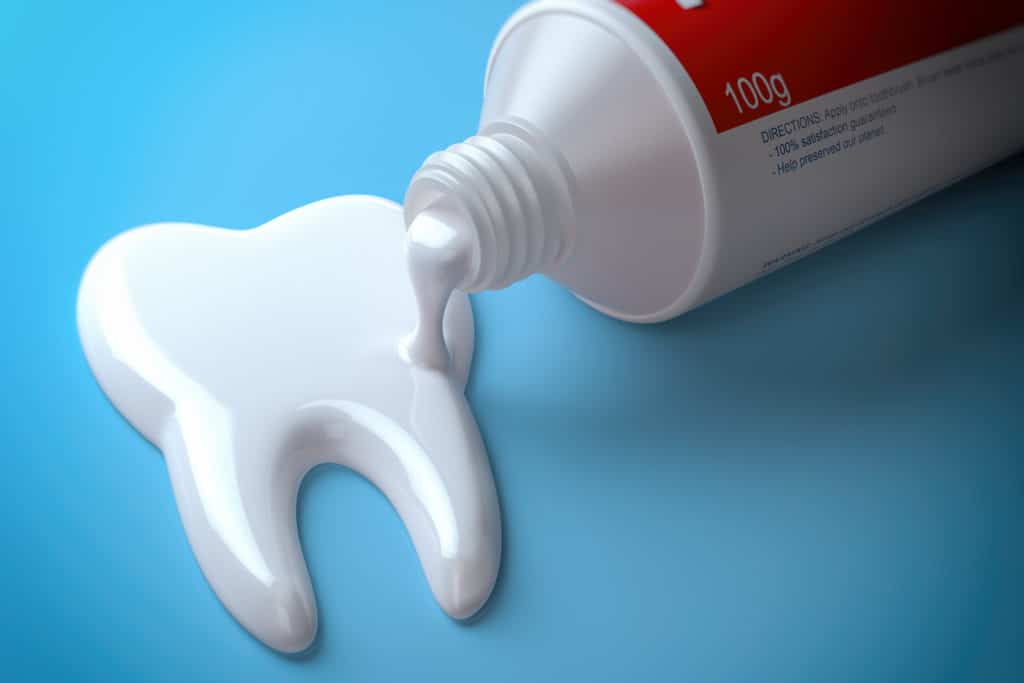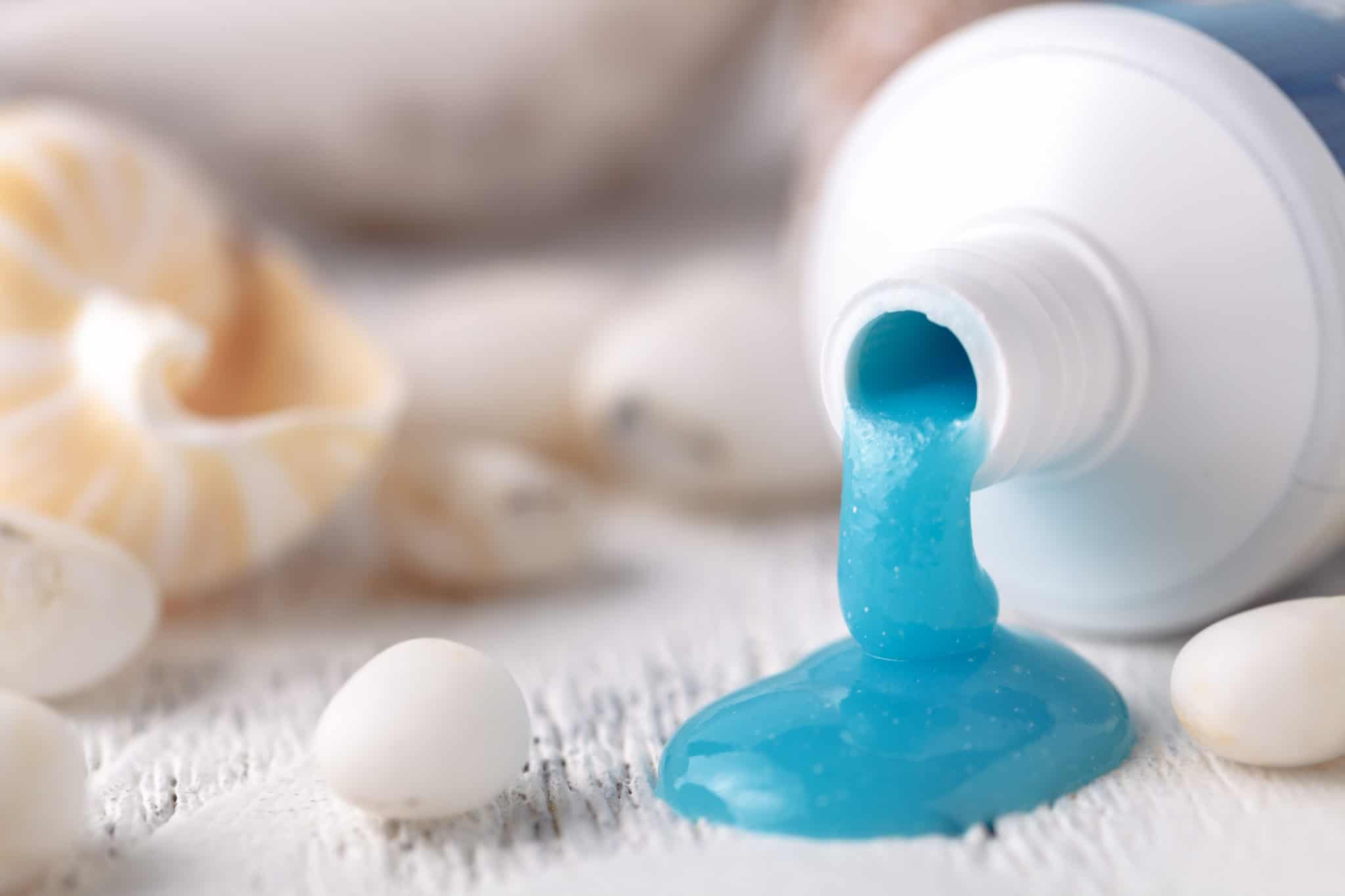Stannous fluoride vs sodium fluoride. Wait what? Everyone knows that fluoride is a common active ingredient in toothpaste, but did you know there are two kinds of fluoride? Yes, at this time, there are two kinds.
In this article, we’ll discuss the benefits of fluoride, stannous fluoride vs sodium fluoride, and why it all matters.
Why is fluoride in toothpaste
So here’s the deal. According to the ADA, all toothpaste help to mechanically remove plaque from the teeth. Just by brushing your teeth you are removing a film of bacteria that forms on teeth and gums every day.
Why is that important? Because dental plaque is the primary cause of gum disease and tooth decay.
But the mechanical part of brushing your teeth is only one side of the coin. Brushing is also based on chemistry, and that has powerful benefits as well. So in addition to the mechanical action of brushing, the paste we use also delivers agents that help combat tooth decay and gum disease. One of the best agents we currently have is fluoride.
Fluoride toothpaste is beneficial because it has been shown to reduce tooth decay and helps to remineralize enamel.
And as I eluded to above, there are two types of fluoride—stannous fluoride and sodium fluoride. So how do you choose stannous fluoride vs sodium fluoride toothpaste. Well lets discuss.
Stannous Fluoride vs Sodium Fluoride
I wouldn’t say stannous fluoride vs sodium fluoride is one of those age-old battles like dog vs cat lover…or coffee vs tea drinker. But if you’re selecting a toothpaste, you may wonder how you decide.
Sodium fluoride and stannous fluoride are the two major active ingredients in modern toothpaste. Actually, sodium fluoride is more common, but stannous fluoride is quickly increasing in use due to recent studies—more on that to follow.
Both prevent cavities. But stannous fluoride has a clear advantage. Studies have shown that it has the ability to target the bacteria which cause gum disease. In one study, it was found that participants that used stannous fluoride had significantly less gum inflammation and gum bleeding.
Okay, so when you’re talking stannous fluoride vs sodium fluoride, its clear that stannous has a clear edge when it comes to periodontal disease. But what about the teeth themselves.
Studies show that both sodium fluoride and stannous fluoride help to reduce the risk of dental decay about equally. They both also have the ability to help remineralize areas of the teeth before they become cavities.
But, stannous fluoride shines once again when it comes to tooth sensitivity. Studies show that stannous fluoride helps to block the tubules of the teeth which reduces sensitivity potentially more effectively.
So Can Stannous Fluoride Reverse Periodontitis?
Wel…yes and no. There’s more you should understand about stannous fluoride and gum disease.
Yes, stannous fluoride has been shown to reduce gum inflammation and bleeding, but its not that simple. Much of the issue with gum disease is that it happens deep in pockets that form along the sides of the teeth.
After a pocket reaches a certain depth, usually 5mm or more, it’s difficult for stannous fluoride to access that area. So yes, it helps to reduce the chance of periodontitis, but it cannot fully treat it once bone loss and tissue loss reaches a certain point.
You may also see advertisements that stannous fluoride reverses periodontal disease, but there is a caveat you need to understand. Although it reduces the inflammation of gum disease, it cannot regenerate the bone loss or gum loss caused.
That’s not to say it’s a hopeless situation. It just means that treating the situation requires treatment at your dentist to be able to reduce the inflammation in those deep areas along the teeth.
What is Stannous Fluoride? Are the disadvantages

Stannous fluoride is simply a fluoride ion that is attached to tin. You may have seen it listed as the chemical formula SnF2.
Sodium fluoride is similar. Its fluoride attached to sodium and its technically NaF.
So the key to understand is that the activity is achieved by the fluoride. In both cases it is just tethered to another ion that releases the fluoride so that it can act on the tooth.
So far stannous fluoride has clearly more benefits but are there any disadvantages?
The biggest concern is that it can stain the teeth a darker color. The stain typically will brush off. It also used to have a poor taste and would tend to feel gritty after brushing. But there’s good news, since 2006, newer formulas are less likely to cause staining.
Stannous fluoride vs Sodium fluoride: Wrapping up
The key to understand is that fluoride in toothpaste is proven to drastically reduce the risk of cavities, and in the case of stannous fluoride it has added benefits with gum inflammation and tooth sensitivity.
The best recommendation for ideal oral health is simple. Brush twice per day with a power toothbrush and fluoride toothpaste, floss once per day, and see your dentist every 6 months.
Do that, and you’re on a good oral hygiene path.


